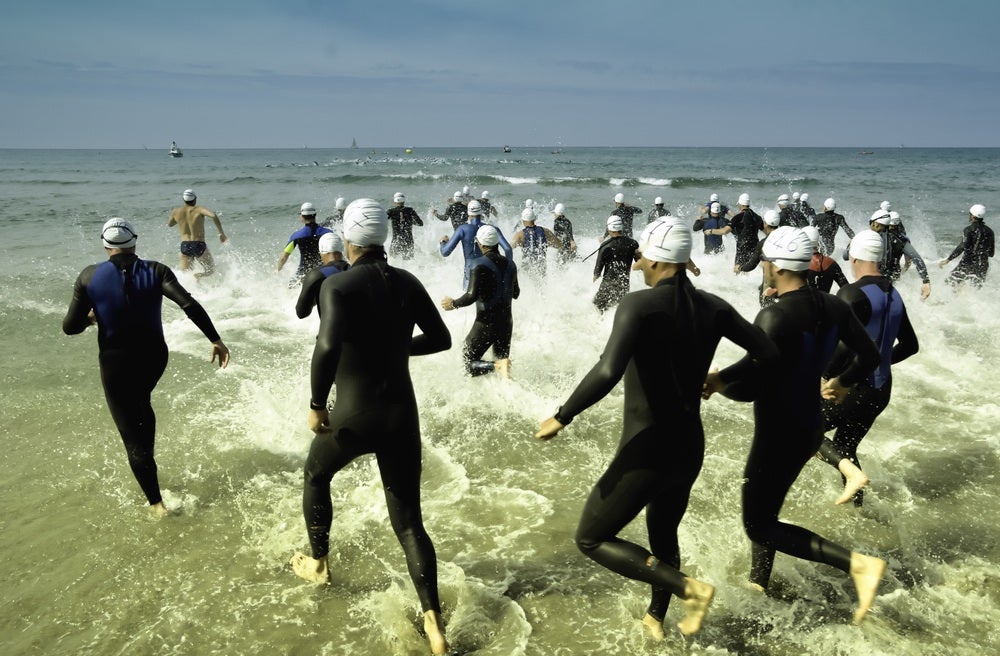What Is A Wetsuit Made Of?

Photo: <a href=http://shutterstock.com>Shutterstock.com</a>
When you jump in the water at your next triathlon, there’s a good chance you’ll be wearing a combination of neoprenes produced by a Japanese company called the Yamamoto Corporation. The company produces the rubber used by most wetsuit manufacturers. Three materials in particular, Yamamoto #38, #39 and #40, are most common.
The rubber used to construct different portions of a suit has a major influence on the way it fits and flexes in the water. The higher the number on the Yamamoto neoprene, the more expensive and flexible it is. When shopping for your next wetsuit, consider the materials used to find the best combination of performance and price for your needs.
RELATED: Finding Your Perfect Wetsuit Fit
What else matters?
Flexibility isn’t the only important difference between neoprene types. They are all similarly buoyant, but many other factors influence the way it moves and feels on your body.
The coating: Although the outer layer of wetsuit neoprene feels smooth, it actually creates substantial friction with the water passing by the swimmer. Many suits have a coating to reduce that resistance and make the suit faster.
Durability: Karen Sing, Profile Design wetsuit developer, says thick panels of #40 mounted to a very flexible jersey liner can be prone to fingernail cuts. Be gentle if your suit is constructed with this ultra-flexible material.
Price: #38 has been around for a long time, says Sing, and it’s affordable. #39 costs more than #38, but the biggest jump in price is from #39 to #40. If you want a suit built with large swatches of #40, it’s going to cost you.
The liner: Inside every wetsuit is a cloth liner that helps hold the suit together, but not all liners are the same. Some are more flexible than others.
The cut: A wetsuit’s shape and seams are critical to the way it flexes and floats. Water can seep in between the swimmer and an ill-fitting suit, which reduces buoyancy.
The thickness: Not surprisingly, thicker neoprene panels are less flexible and more buoyant than thinner panels of the same material.